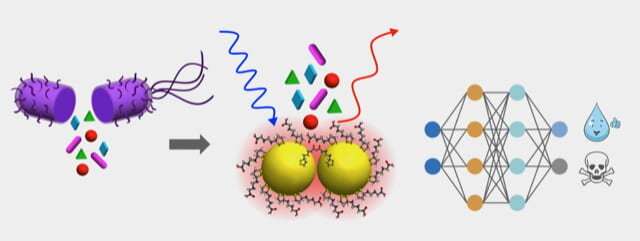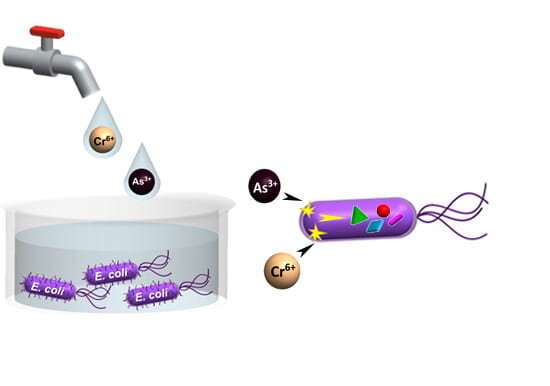Researchers create E. coli-based water monitoring technology

People often associate Escherichia coli with contaminated food, but E. coli has long been a workhorse in biotechnology. Scientists at the University of California, Irvine have demonstrated that the bacterium has further value as part of a system to detect heavy metal contamination in water.
E. coli exhibit a biochemical response in the presence of metal ions, a slight change that researchers were able to observe with chemically assembled gold nanoparticle optical sensors. Through a machine-learning analysis of the optical spectra of metabolites released in response to chromium and arsenic exposure, the scientists were able to detect metals in concentrations a billion times lower than those leading to cell death—while being able to deduce the heavy metal type and amount with higher than 96 percent accuracy.
The process, which the researchers said can be accomplished in about 10 minutes, is the subject of a study appearing in Proceedings of the National Academy of Sciences.
“This new water monitoring method developed by UCI researchers is highly sensitive, fast and versatile,” said co-author Regina Ragan, UCI professor of materials science and engineering. “It can be broadly deployed to monitor toxins at their sources in drinking and irrigation water and in agricultural and industrial runoff. This system can provide an early warning of heavy metal contamination to safeguard human health and ecosystems.”

In addition to proving that bacteria like E. coli can detect unsafe water, the researchers spotlighted the other necessary components—gold nanoparticles assembled with molecular precision and machine learning algorithms—which greatly enhanced the sensitivity of their monitoring system. Ragan said it can be applied toward spotting metal toxins—including arsenic, cadmium, chromium, copper, lead and mercury—at levels orders of magnitude below regulatory limits to provide early warning of contamination.
In the study, the scientists explained that they can apply trained algorithms to unseen tap water and wastewater samples, which means the system can be generalized to water sources and supplies anywhere in the world.
“This transfer learning method allowed the algorithms to determine if drinking water was within U.S. Environmental Protection Agency and World Health Organization recommend limits for each contaminant with greater than 96-percent accuracy and with 92-percent accuracy for treated wastewater,” Ragan said.
“Access to safe water is necessary for the health of people and the planet,” she added. “New technology that can be mass manufactured at low-cost is needed to monitor the introduction of an array of contaminants in the water supply as a critical part of the solution for water security in the face of pollution and climate change.”
More information:
Hong Wei et al, Decoding the metabolic response of Escherichia coli for sensing trace heavy metals in water, Proceedings of the National Academy of Sciences (2023). DOI: 10.1073/pnas.2210061120
Citation:
Researchers create E. coli-based water monitoring technology (2023, February 23)
retrieved 24 February 2023
from https://phys.org/news/2023-02-coli-based-technology.html
This document is subject to copyright. Apart from any fair dealing for the purpose of private study or research, no
part may be reproduced without the written permission. The content is provided for information purposes only.
For all the latest Science News Click Here
For the latest news and updates, follow us on Google News.

